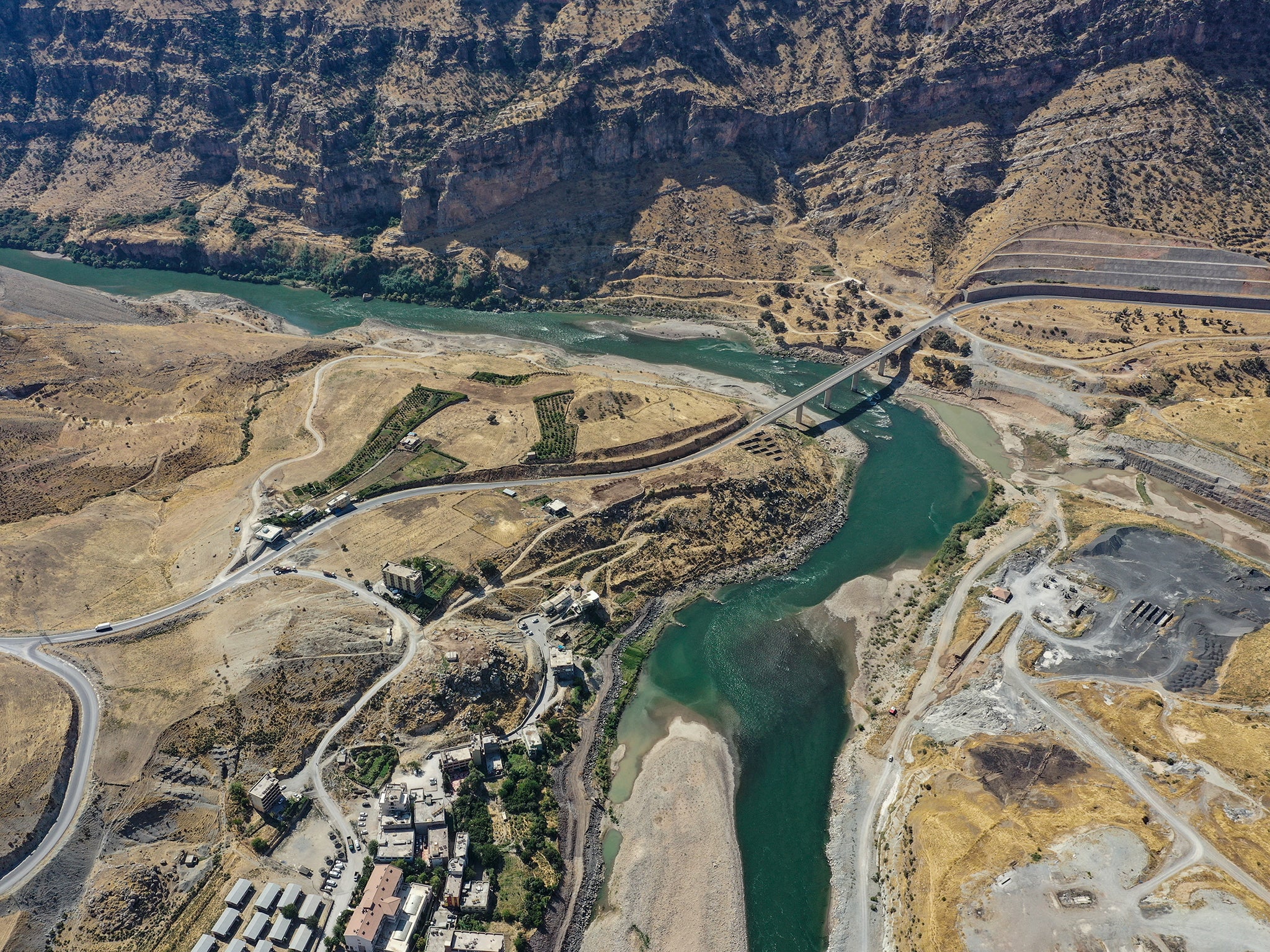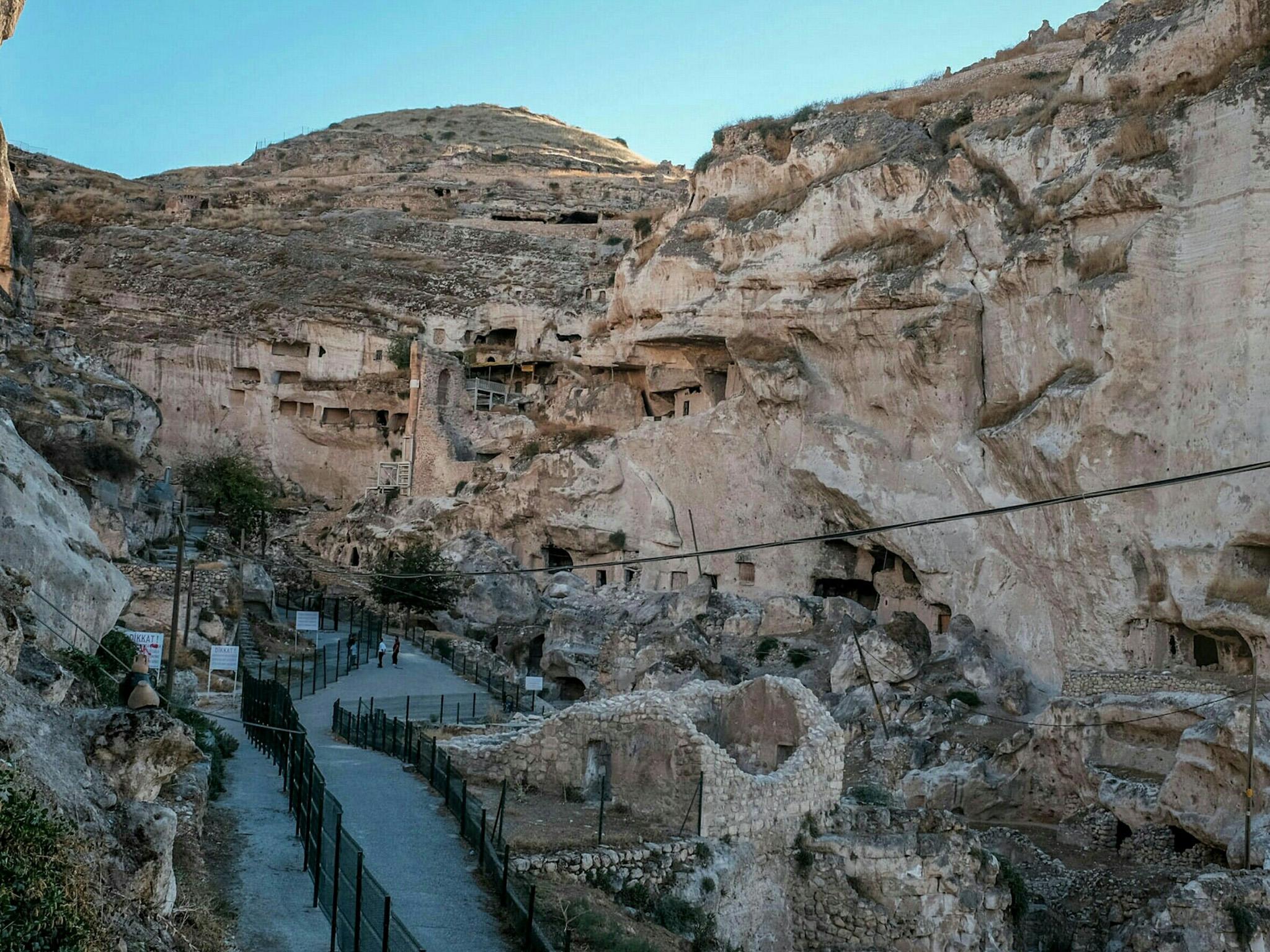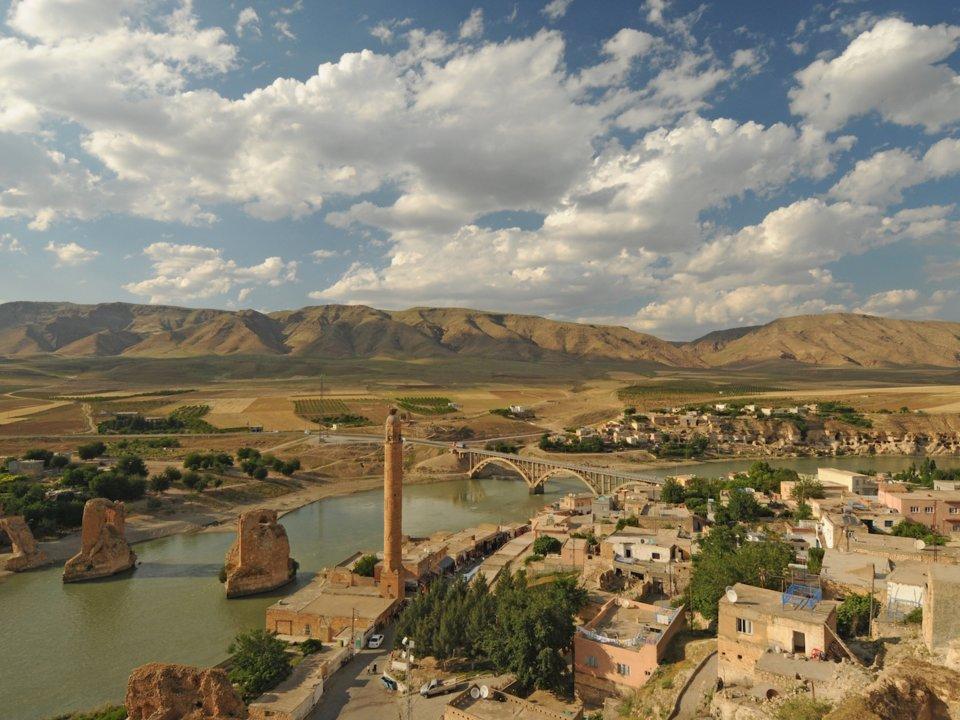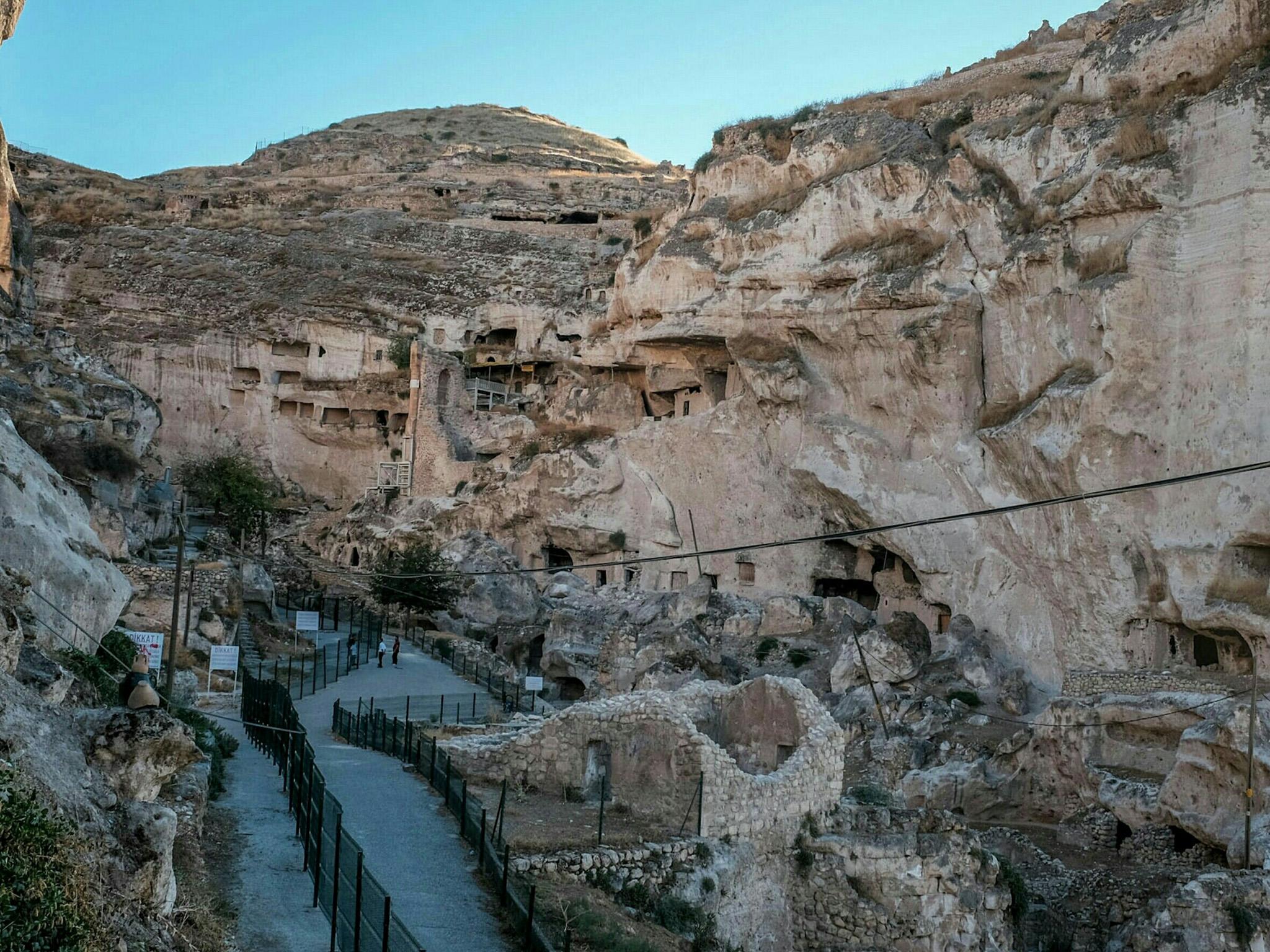Ancient Turkish town is about to disappear after being flooded by dam
'They have made victims of the people of Hasankeyf'

Your support helps us to tell the story
From reproductive rights to climate change to Big Tech, The Independent is on the ground when the story is developing. Whether it's investigating the financials of Elon Musk's pro-Trump PAC or producing our latest documentary, 'The A Word', which shines a light on the American women fighting for reproductive rights, we know how important it is to parse out the facts from the messaging.
At such a critical moment in US history, we need reporters on the ground. Your donation allows us to keep sending journalists to speak to both sides of the story.
The Independent is trusted by Americans across the entire political spectrum. And unlike many other quality news outlets, we choose not to lock Americans out of our reporting and analysis with paywalls. We believe quality journalism should be available to everyone, paid for by those who can afford it.
Your support makes all the difference.The time had finally come for Ramsiz Alcin to leave, generations after her ancestors settled in this ancient town on the Tigris, decades after the state proposed building a dam down river and after years of protests that had ultimately failed to stop it.
The dam would leave Hasankeyf almost totally submerged.
The water was coming, soon, officials said. So Ms Alcin and her family moved last month, abandoning their house with its fig and pomegranate trees. A flatbed truck transferred their belongings to a new home, on higher ground, but the place - shoddily built, with a garden full of rocks - was no substitute.
"They made victims of the people of Hasankeyf," she said.
It is expected to take a few months before the water starts to rise in this 12,000-year-old town, one of the oldest known, continuously inhabited settlements in the world, as the reservoir created by the Ilisu dam more than 35 miles downstream begins to fill.
Turkey's government has promoted the dam as a vital development project – part of a larger network of dams aimed at reducing the country's dependency on energy imports and providing jobs in its impoverished southeast region.
But the project has also faced years of stiff resistance from critics who said its benefits were hardly worth the cost to local communities and from historians, archaeologists and others who say the preservation of Turkey's cultural heritage is a global concern.
The reservoir will stretch nearly 100 miles from Ilisu and displace more than 70,000 people, wipe out endangered wildlife species and erase the splendour of Hasankeyf.
The town is arranged like a living museum, in the shadow of limestone cliffs, with remnants of its past settlers - Neolithic, Byzantine, Roman and Ottoman - strewn delightfully about for visitors. Two majestic, stone piers rise from the river at an entrance to the town – the remnants of a 12th century, four-arched bridge.
Farther down the river are caves, carved out of the banks like a honeycomb by settlers thousands of years ago.
The arguments over the project pit ambitious development plans against historical preservation and poorer citizens against government and big business. The dam, built in a Kurdish-majority area, has also added to the complaints by ethnic Kurds that they are marginalised by the state.

The dam is also a source of regional tension, too. Turkey's construction of dams and irrigation projects have reduced the flow of water in the Tigris and Euphrates rivers to Iraq and Syria, its downstream neighbours, causing hardship and sparking fears of greater conflict.
The Ilisu dam is part of a government plan dating to the 1970s aimed at developing southeastern Turkey with 22 dams and 19 hydroelectric plants, according to a summary on the website of the Ministry of Industry and Technology. The goals of the project - the largest and costliest in Turkey's history - include "eliminating development disparities existing between the region and other parts of the country", the summary says.
Protests against the dam have drawn in foreign environmentalists and scored a major victory in 2009, when European creditors withdrew funding from the project.

But the next year, Turkish banks stepped in to provide the government with hundreds of millions of dollars in loans, and the project moved forward.
The government has spent millions relocating artefacts from Hasankeyf, including a 15th-century tomb, a bathhouse and a mosque. Some are already on display in New Hasankeyf, and others will be housed in a new museum. One of the town's best-known attractions, a Roman citadel, will remain visible above the waterline. But the other iconic structure - the remains of the old Tigris bridge - will be submerged.
"Thousands of years of history will be left underwater," said Midini Cicek, who picnicked with two friends near a pond a few miles from Hasankeyf, in a spot he said they had all visited since childhood. Thousands of people living in nearby villages are being displaced, and fishermen who worked along the river are facing the loss of their livelihood, he said.

The valley where they sat would be transformed. But Mr Cicek tried to find a bright spot. "We'll put Jet Skis on the water," he said.
On a recent Sunday, Hasankeyf was filled with tourists, some saying they came to catch a last glimpse of the place before it vanished.
Mehmet Arif Ayhan, who owns a rug store in the central market, tried to coax them into his shop, looking to make sales in the days or weeks that remained. "The tourists are here to take pictures," he said. "They don't come inside."
His family had lived in the town for at least 500 years, according to his parents, who were part of a generation that lived in the caves carved into Hasankeyf's cliffs. He had not decided what to do once he was forced out. "Most likely, I'll be one of the last people moving," he said.
Ms Alcin surveyed her new neighbourhood in a government-built settlement called New Hasankeyf, a mile away from the old town. The gray houses, laid out like a barracks, erased the sense of the community that had been built in old Hasankeyf, she said.
"We'll barely be able to see each other here," she said.
Ahmet Akdeniz, whose family also had lived in Hasankeyf for hundreds of years, has been one of the vocal supporters of the government plans to transform the area – so enthusiastic, in fact, that the Turkish foreign ministry had flown him abroad to promote the project to European audiences, he said. He said residents displaced by the dam would benefit from larger homes and more tourists as the government promoted the attractions in New Hasankeyf.
But even Mr Akdeniz acknowledged some of the complaints about the new settlement, blaming the shoddy construction in the homes on "mistakes" by government contractors.
Further downstream, Ahmet Demir, the mayor of Irmak, a village of 200 people, said a government compensation system would allow residents to build new homes on higher ground, a process that had already begun.
But nothing about the future was certain. The residents were farmers who raised animals, and "that will end with the lake," he said, referring to uncertainty about the quality of the soil as the landscape was transformed. "Maybe we will fish?"
"I never wanted any of this. This is my home," he said, gesturing to the lush valley, as the sun set. "What is money, compared to this?"
The Washington Post
Join our commenting forum
Join thought-provoking conversations, follow other Independent readers and see their replies
Comments